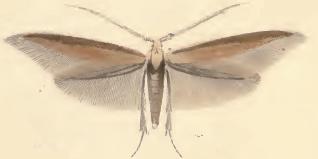
Gallia Narbonensis was a Roman province located in what is now Occitania and Provence, in Southern France. It was also known as Provincia Nostra, because it was the first Roman province north of the Alps, and as Gallia Transalpina, distinguishing it from Cisalpine Gaul in Northern Italy. It became a Roman province in the late 2nd century BC. Gallia Narbonensis was bordered by the Pyrenees Mountains on the west, the Cévennes to the north, the Alps on the east, and the Gulf of Lion on the south; the province included the majority of the Rhone catchment. The western region of Gallia Narbonensis was known as Septimania. The province was a valuable part of the Roman Empire, owing to the Greek colony and later Roman Civitas of Massalia, its location between the Spanish provinces and Rome, and its financial output.

Vicia is a genus of over 240 species of flowering plants that are part of the legume family (Fabaceae), and which are commonly known as vetches. Member species are native to Europe, North America, South America, Asia and Africa. Some other genera of their subfamily Faboideae also have names containing "vetch", for example the vetchlings (Lathyrus) or the milk-vetches (Astragalus). The lentils are included in genus Vicia, and were formerly classified in genus Lens. The broad bean is sometimes separated in a monotypic genus Faba; although not often used today, it is of historical importance in plant taxonomy as the namesake of the order Fabales, the Fabaceae and the Faboideae. The tribe Vicieae in which the vetches are placed is named after the genus' current name. The true peas (Pisum) are among the closest living relatives of vetches.

The Coleophoridae are a family of small moths, belonging to the huge superfamily Gelechioidea. Collectively known as case-bearers, casebearing moths or case moths, this family is represented on all continents, but the majority are found in temperate areas of the Northern Hemisphere. They are most common in the Palearctic, and rare in sub-Saharan Africa, South America, and Australia; consequently, they probably originated in northern Eurasia. They are relatively common in houses, they seek out moist areas to rest and procreate.

Coleophora is a very large genus of moths of the family Coleophoridae. It contains some 1,350 described species. The genus is represented on all continents, but the majority are found in the Nearctic and Palaearctic regions. Many authors have tried splitting the genus into numerous smaller ones, but most of these have not become widely accepted.

The Diocese of the Seven Provinces, originally called the Diocese of Vienne after the city of Vienna, was a diocese of the later Roman Empire, under the praetorian prefecture of Gaul. It encompassed southern and western Gaul, that is, modern France south and west of the Loire, including Provence.

Coleophora serratella is a moth of the family Coleophoridae. It is found in Europe, Japan (Hokkaido) and North America.

Coleophora limosipennella is a moth of the family Coleophoridae described by Philogène Auguste Joseph Duponchel in 1843. It is found in Europe from Fennoscandia to the Pyrenees, Italy and the Balkan Peninsula and from Great Britain to the Baltic States and Romania. It is an introduced species in North America.

Coleophora anatipennella is a moth of the case-bearer family (Coleophoridae).

Coleophora alcyonipennella, the clover case-bearer or small clover case-bearer, is a moth of the family Coleophoridae. It is native to Asia, Europe and North Africa, and has been introduced to Australia and New Zealand.

The metallic coleophora moth is a moth of the family Coleophoridae. It is native to Europe and Armenia, but is an adventive species in the Nearctic realm, where it is found throughout the United States and southern Canada. It has also been recorded from New Zealand, Chile and Argentina.

Coleophora albicostella is a moth of the family Coleophoridae. It is found from Latvia to the Iberian Peninsula, Italy, Greece and Cyprus.

Coleophora wockeella is a moth of the family Coleophoridae. It is found from Latvia to the Iberian Peninsula, Italy and Albania and from Great Britain to southern Russia.

Coleophora virgatella is a moth of the family Coleophoridae. It is found from Germany and Poland to the Pyrenees, Italy and Greece. It has also been recorded from southern Russia and central Asia.

Coleophora auricella is a moth of the family Coleophoridae. It is found from Germany and Poland to Spain, Italy and Romania. It has also been recorded from southern Russia.

Coleophora colutella is a moth of the family Coleophoridae. It is found in all of Europe, except Great Britain and Ireland. It is an introduced species in North America.

Coleophora ledi is a moth of the family Coleophoridae. It is found from Fennoscandia and northern Russia to the Pyrenees and the Alps. In the east, it ranges to Japan. Outside of Eurasia, it is known from North America where it is found in eastern Canada, Michigan, and Alaska.
Coleophora oriolella is a moth of the family Coleophoridae. It is found in Germany and Poland to the Iberian Peninsula, Sardinia, Sicily and Greece and from France to southern Russia.
Coleophora dianthi is a moth of the family Coleophoridae. It is found in most of Europe, Russia, Turkey and Iraq.

Coleophora cratipennella, the streaked coleophora moth, is a moth of the family Coleophoridae. It is found in the United States, including Kentucky, Pennsylvania, California, Maine and Oklahoma.











